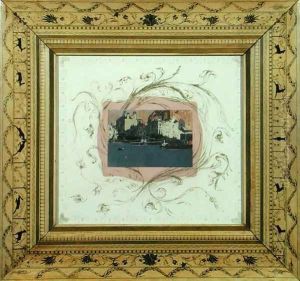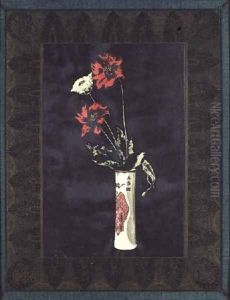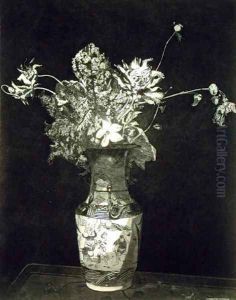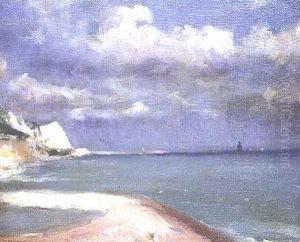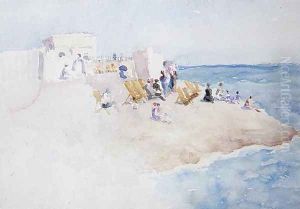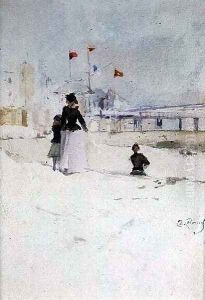Theodore Roussel Paintings
Theodore Roussel was a notable figure in the British Impressionism movement, although he was of French descent. Born on April 23, 1847, in Lorient, Brittany, France, Roussel moved to England in the early 1870s, where he would spend the majority of his career and life. His work is characterized by a keen attention to light and color, often focusing on landscapes, seascapes, and intimate portraits.
Roussel's artistic journey was profoundly influenced by his encounter with James McNeill Whistler, an American artist who had a significant impact on British art during that period. The meeting between Roussel and Whistler in the late 1880s marked a turning point in Roussel's career, leading him to adopt the Tonalism technique, which emphasizes the use of a single or limited color palette to create harmony and mood in a painting. This was a departure from his earlier, more detailed and realistic works.
Despite his association with Whistler and the British Impressionists, Roussel maintained a distinct style, often experimenting with etching and printmaking, in addition to painting. His exploration of these mediums contributed to the revival of etching in England during the late 19th century, making him a pivotal figure in the British Etching Revival. Roussel's prints and paintings often depicted everyday scenes and people, imbuing them with a sense of dignity and beauty.
Roussel's contributions to art were recognized in his time, and he was a member of several prestigious art societies, including the Royal Society of British Artists. However, his work fell into relative obscurity following his death on April 20, 1926. In recent years, there has been a renewed interest in Roussel's oeuvre, with art historians and collectors appreciating his role in the development of Impressionism and printmaking in Britain. Today, Theodore Roussel's works are held in major collections worldwide, serving as a testament to his skill and innovative approach to art.


